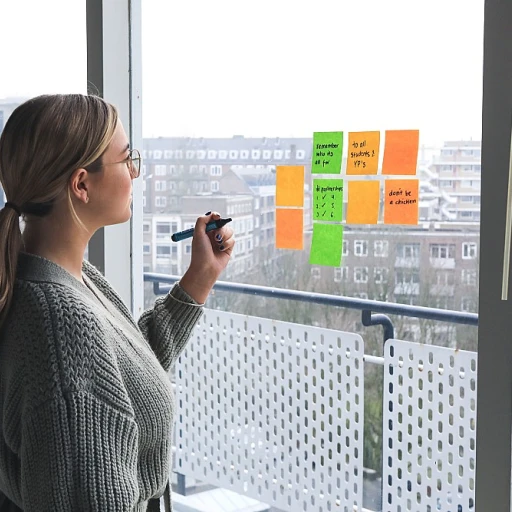
Understanding the need for space management in New Zealand offices
Why New Zealand offices are rethinking their space
Office managers across New Zealand are facing a new set of challenges as work environments evolve. The process of managing office space is no longer just about fitting desks into a room. It’s about creating a driving force for productivity, safety, and cost efficiency. With more flexible work arrangements, the need to avoid wasted space and hazards in the workplace is greater than ever. This is where a space management system comes in, acting almost like a defensive driving course for your office—helping you anticipate and avoid danger before it becomes a problem.
Common challenges in today’s office environment
- Searching for available workspaces: Employees often spend valuable time searching for a desk or meeting room, which can slow down the process and reduce productivity.
- Managing traffic flow: Just like on the road, managing the flow of people in shared areas is crucial to avoid congestion and ensure everyone’s safety.
- Adapting to new driving behaviors: With hybrid work, staff are in and out of the office at different speeds and times, making it harder to predict space needs and maintain vehicle control over resources.
- Addressing compliance: There are new safety requirements and hazards to consider, especially in high-traffic areas or shared spaces. The right system will help you stay compliant and avoid collisions—both literal and figurative.
The impact of inefficient space management
Without a clear system, offices risk losing control over their environment. This can lead to overcrowded areas, underutilised spaces, and increased costs. Remember that the safest course of action is to proactively manage your office layout, much like a driver scanning the roadway ahead to avoid danger. By understanding the target area for improvement, office managers can take decisive action and steer their workplace toward greater efficiency and safety.
For a deeper look at how technology is driving these changes and how your office can keep up, check out this resource on AI efficiency in New Zealand offices.
Key features of an effective space management system
Essential Components for Effective Office Space Management
A robust space management system is more than just a tool for tracking desks and meeting rooms. It is a process that will help office managers in New Zealand avoid hazards and streamline the use of every area in the workplace. When evaluating a system, consider these key features that drive efficiency and safety:- Real-time occupancy tracking: This feature allows you to monitor which spaces are in use and which are available, reducing the time spent searching for a suitable area. It also helps avoid congestion and supports defensive driving behavior within busy office corridors, much like managing traffic on the road.
- Automated booking and scheduling: An effective system will automate the process of reserving meeting rooms, desks, or collaborative zones. This avoids double-booking and ensures that every driver of productivity in your team has access to the resources they need, when they need them.
- Flexible space allocation: As New Zealand offices adapt to hybrid and remote work, the ability to quickly reassign spaces is crucial. The system should support changes in lane position, allowing for the safest course of action as your workforce shifts between on-site and remote work.
- Integration with access control and safety protocols: To avoid danger and ensure compliance, the system must work with your existing vehicle control measures, such as security badges or visitor management. This helps manage the flow of people and vehicles in shared spaces, reducing the risk of collision or hazards in high-traffic areas.
- Data-driven insights: The process will generate reports on space utilization, driving behavior, and cost savings. These insights help you decide the best course of action for future planning and resource allocation, supporting continuous improvement in your office environment.
| Feature | Benefit |
|---|---|
| Real-time tracking | Avoid searching and congestion |
| Automated booking | Streamlines process, reduces errors |
| Flexible allocation | Adapts to changing work patterns |
| Integration with safety | Improves compliance, avoids hazards |
| Data insights | Supports informed management decisions |
Adapting to flexible work environments
Creating a Safe and Flexible Office Environment
Flexible work environments are now a driving force in New Zealand offices. As organisations adapt to hybrid schedules and hot-desking, the process will require a robust space management system. This system helps avoid hazards like overcrowding, inefficient use of space, and confusion about desk or meeting room availability. By managing the flow of people—much like traffic management on a busy road—offices can maintain a safe and productive environment.
- Vehicle control analogy: Just as a driver must be aware of the roadway ahead and adjust speed or lane position to avoid danger, office managers need to monitor workspace occupancy and take action to avoid congestion or unsafe conditions.
- Defensive driving principles: Applying defensive driving behavior in the office means anticipating potential hazards, such as bottlenecks in shared areas or high-traffic zones. The system will help identify these risks and suggest the safest course of action.
- Searching for available space: Employees often spend valuable time searching for a free desk or meeting room. A good space management system streamlines this process, reducing wasted time and improving overall productivity.
Remember that adapting to flexible work environments is not just about technology—it’s about creating a culture where the safest course is always top of mind. The right system supports this by providing real-time data, alerts, and clear pathways for action decided by management. This approach helps avoid collision points, whether it’s between people or conflicting bookings, and ensures everyone can navigate the office area safely and efficiently.
For a deeper look at how process management principles support these changes, check out this analysis of PM 2.0’s impact on New Zealand office management.
Addressing compliance and safety requirements
Ensuring Safety and Compliance in Every Area
Managing office space in New Zealand is not just about maximising efficiency—it’s also about keeping people safe and meeting legal requirements. A robust space management system will help you avoid hazards and ensure your workplace meets all compliance standards. This process will support your team in making the safest course of action when navigating the office environment.- Clear Pathways: The system helps maintain clear lanes and target areas, reducing the risk of collisions or blocked exits. Just as drivers must keep their lane position and monitor the roadway ahead, office managers need to ensure every area is free from obstacles.
- Monitoring Occupancy: By tracking how many people are in each space, you can avoid overcrowding and maintain safe distances. This is similar to defensive driving, where drivers adjust their speed and behavior to avoid danger and maintain vehicle control.
- Emergency Preparedness: The system supports compliance by mapping out evacuation routes and identifying hazards. When an action is decided during an emergency, having a clear process will help everyone reach safety quickly—much like a driver choosing the safest course to avoid collision.
- Automated Alerts: Automated notifications about hazards or maintenance needs keep everyone informed. This proactive approach helps avoid danger before it becomes a problem, mirroring the way drivers scan the area roadway for potential risks.
Integrating with existing office technology
Seamless Connections for Smarter Workspaces
Integrating a space management system with your existing office technology is a critical step in driving efficiency and safety in New Zealand workplaces. When your system communicates smoothly with tools like access control, booking platforms, and environmental sensors, you gain real-time visibility into how your space is being used. This process will help you avoid hazards such as overcrowding or bottlenecks in high-traffic areas, supporting both compliance and a safer driving environment for everyone moving through the office.
- Centralised data: By connecting your space management system with other platforms, you create a single source of truth. This avoids the danger of conflicting information and helps you take the safest course of action when making decisions about space allocation or emergency procedures.
- Automated workflows: Integration means less manual searching and more automated alerts. For example, if a meeting room is overbooked, the system can automatically suggest alternative spaces, reducing the risk of driver-like behavior where staff "race" to claim areas.
- Enhanced vehicle control: Think of your office as a roadway ahead—integrated systems help manage the flow of people (the "vehicles") and avoid collisions in busy corridors or shared spaces.
Remember that the goal is to create a workplace where the path of travel is clear, and everyone can move at a safe speed. The right integration supports defensive driving principles in the office: anticipating risks, maintaining safe distances, and adjusting behavior to avoid danger. This is especially important in flexible work environments, where lane position and the target area for each team member may change daily.
Ultimately, integrating your space management system with other technologies will help you maintain control over your area of roadway, reduce the risk of traffic jams, and ensure that every action decided is based on accurate, up-to-date information. This approach not only improves safety but also supports productivity and cost savings across your organisation.
Measuring the impact on productivity and cost savings
Tracking the Real Impact of Space Management
When you implement a space management system in your New Zealand office, it’s important to measure its impact on productivity and cost savings. This process will help you understand if your chosen system is truly driving positive change, or if adjustments are needed to avoid hazards like wasted resources or inefficient workflows.
- Reduced time searching for space: Employees spend less time searching for available desks or meeting rooms. This action decided by the system improves workflow, much like a driver choosing the safest course on the road to avoid danger and keep the vehicle moving smoothly.
- Optimised area usage: The system provides data on how each area is used. This helps management avoid underused spaces and allocate resources to high-demand zones, similar to how defensive driving requires constant awareness of the roadway ahead and lane position to avoid collision.
- Cost control: By tracking occupancy and usage patterns, you can identify where costs can be reduced. For example, you might discover that a particular area roadway is rarely used, allowing you to repurpose or downsize, which will help avoid unnecessary expenses.
- Improved employee experience: A well-managed space means fewer distractions and hazards, supporting better focus and productivity. This is like maintaining vehicle control and choosing the safest course of action to avoid danger on the road.
Remember that ongoing measurement is key. Regularly review reports from your space management system to ensure your office environment continues to support your team’s needs. The process will reveal patterns in driving behavior and space usage, guiding future decisions and helping you stay ahead of potential issues before they become real dangers.
In summary, a robust space management system acts much like a defensive driving course for your office: it helps you anticipate hazards, choose the safest path of travel, and maintain control over your resources. This approach ensures your workplace remains efficient, cost-effective, and safe for everyone.













